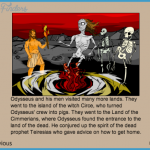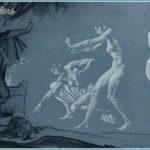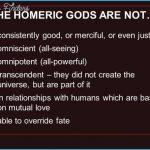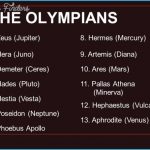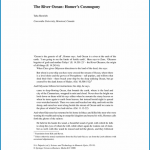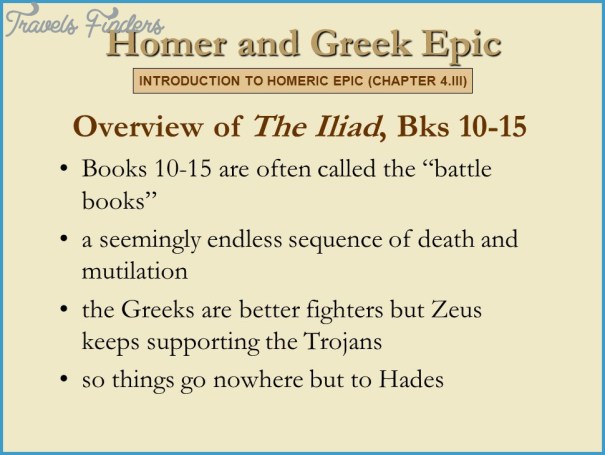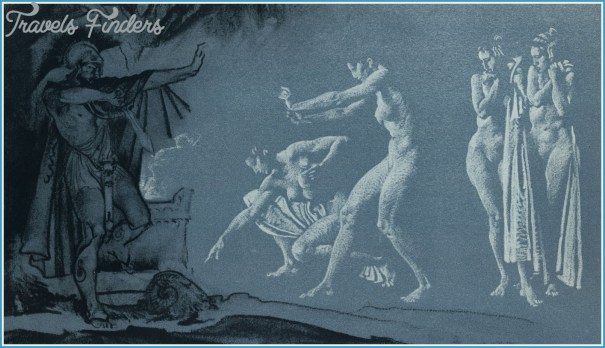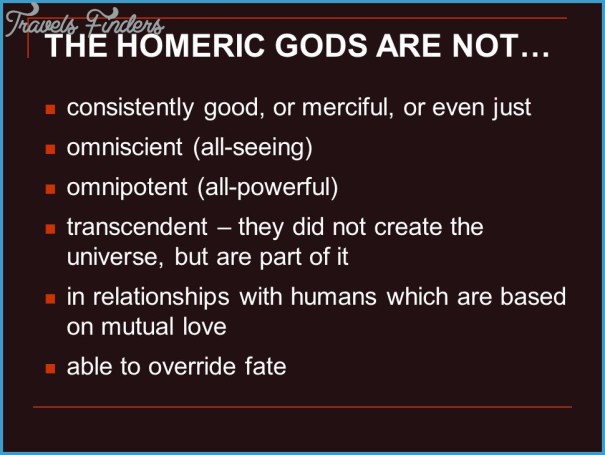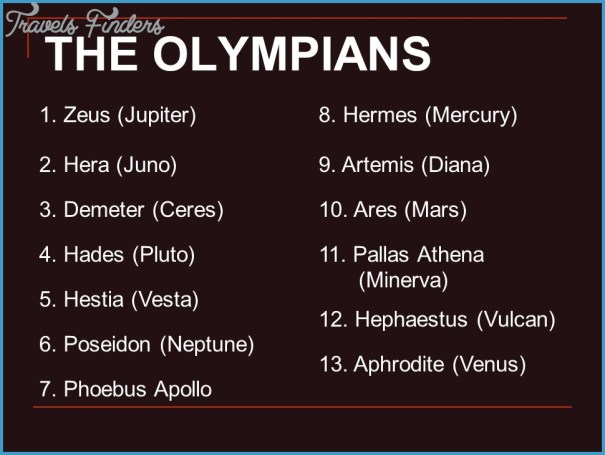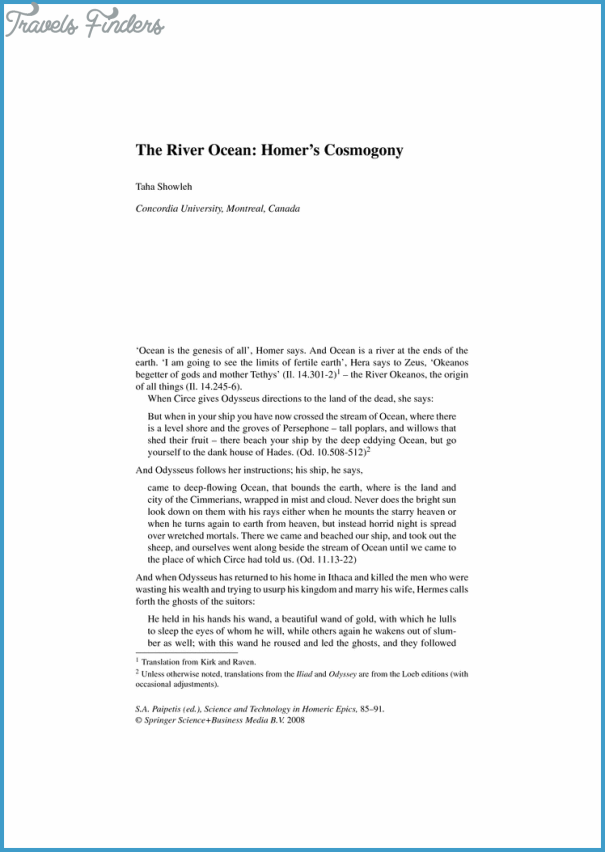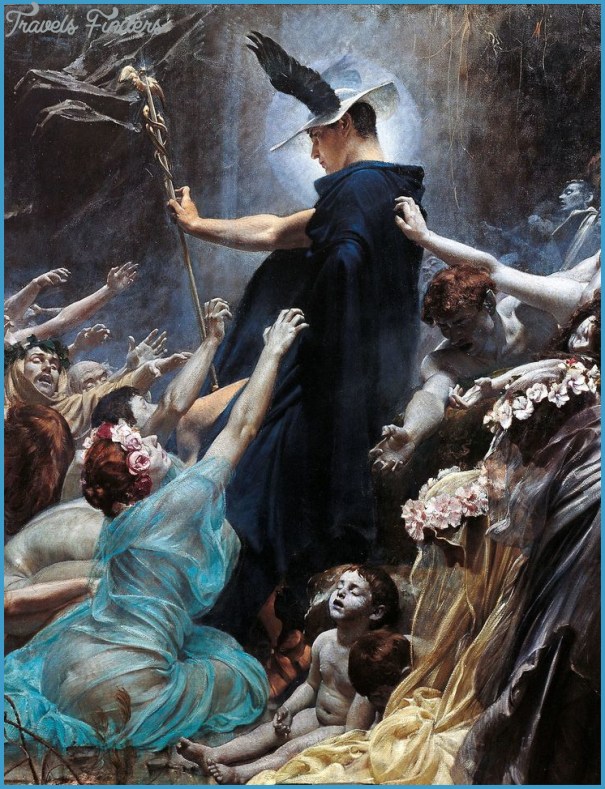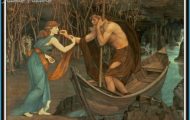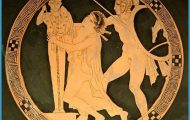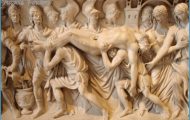In the Iliad, none of the action takes place in Hades, but we do learn about it. Sited beside the River Styx’s icy waterfall and protected by a grim dog, Hades lies just below the surface of the earth. When Poseidon causes an earthquake, Haides ‘ruler of the dead, sprang up in terror from his throne and bellowed loud in fear lest – up above – Poseidon, who encircles the dry land, might crack open the earth and expose to men and gods the houses of the dead, so hideous and mouldering that even the gods shudder as they see them. ’
Homeric Hades Photo Gallery
We learn, too, that being dead was not of itself sufficient qualification to enter Hades. Rather, corpses needed to be buried or cremated. Thus at Troy Patroclus ghost begs Achilles: Bury me as quickly as you can and let me enter through the gates of Hades. The souls, which bear the image of the dead, are shunning me and will not allow me across the river to join them, but I am wandering just as I am by Haides house with its wide gates. The three-headed dog Cerberus, guardian of the Underworld, sits at the feet of his master, Haides.
The Iliad also tells of a special area in Hades, called Tartarus, reserved for whoever disobeyed the gods will. Zeus threatens that if anyone defies him: ‘I shall hurl him down to the mists of distant Tartarus, in the deepest pit beneath the earth with its iron gates and brazen threshold, as far below Hades as earth is beneath the skies. The Odyssey fleshes out this subterranean landscape, revealing more about how the spirits journeyed there. Before Hermes conducts the souls of the dead suitors from Ithaca to the Underworld, using his kerykeion: he roused them from their sleep, and, gibbering, they followed him. As gibbering bats flit back and forth in the darkest corners of a cave, when one falls from the cluster where they cling on to each another and the rock, so they went with him, gibbering, and gracious Hermes led them down the dripping path. Past Ocean’s streams, past the White Rock, past the gateway of the sun they went and past the Land of Dreams, and soon they came to the Asphodel Meadow, where the spirits live, which bear the image of those men who work no more.
The geography tallies reasonably well with the Odyssey’s description of Odysseus voyage to consult the spirits of the dead in a setting that bears some similarity to Ephyra. Here, Odysseus digs a pit into which he pours libations of milk, honey, wine and water, sprinkles white barley meal, slits the throat of sacrificial sheep, and lets the blood gush down. Greedily the spirits jostle to eat and drink. Homer describes them by category: first heroic women – Odysseus mother, Anticlea, Jocasta, Leda, Phaedra and many more; next heroic warriors, including Agamemnon, Patroclus and Ajax. Grimly, Achilles, who at Troy preferred everlasting fame to long life, comments: ‘I would rather be a hired labourer, working in a poor man’s house, but alive, than the king of kings among the dead. Nonetheless when Odysseus tells him of Neoptolemus, ‘Achilles ghost strode off across the meadow thick with asphodel, rejoicing at the news of his son’s glory’. As, dreamlike, the scene shifts from the sacrificial pit, Odysseus witnesses the torture of the damned before the sheer volume of spirits and their blood-chilling screams cause him to flee, ‘terrified lest Persephone send up from Haides house the head of the grim Gorgon’.
Homer’s Hades is a place of monochrome monotony, where souls remember their past lives with aching nostalgia, a vision captured by Sappho: ‘When you are dead, you will lie forgotten. No one will mourn you, no one bring roses for you from Pieria. In death as in life you will be quite anonymous, wandering vaguely, with the aimless, nameless dead.’


